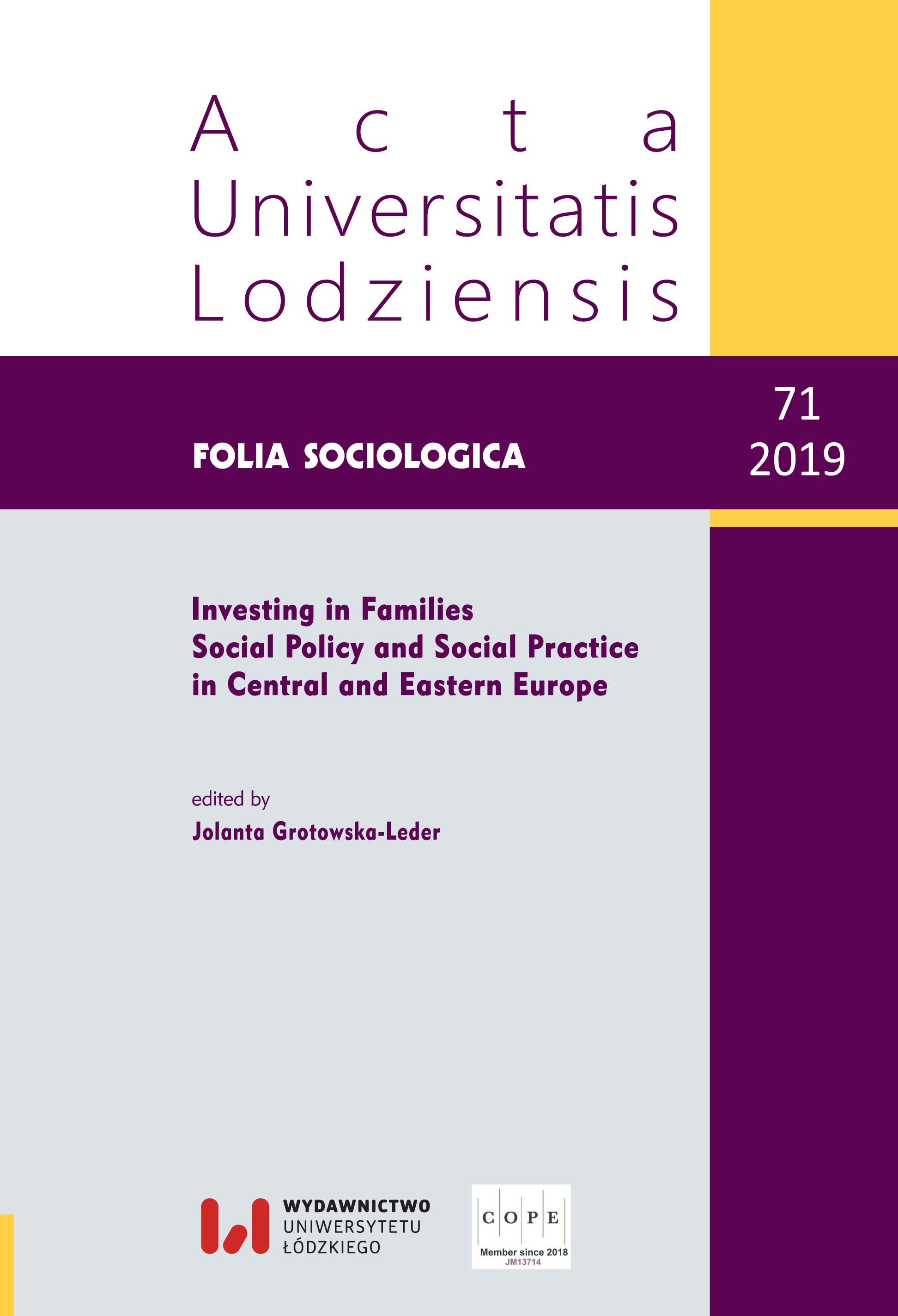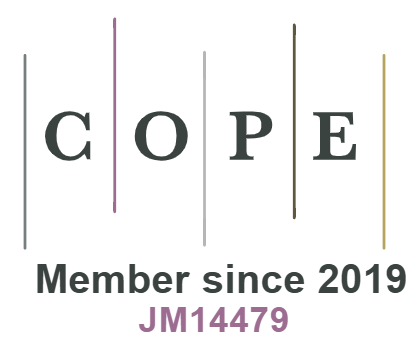Child negligence and criminal onset in ex-prisoners’ early life stories
DOI:
https://doi.org/10.18778/0208-600X.71.05Keywords:
criminal onset, ex-prisoners, neglected childhood, social exclusion, biographical method, narrative interviewAbstract
Sociological analyzes of the etiology of criminal behavior are distinguished by a number of criminogenic factors, among which a particular importance is attributed to the environmental context of the individual’s functioning. The initiation of criminal activity frequently takes place in the period of early youth. Hence, special attention is paid to individual’s relations in socializing environments. At the same time, studies and analyzes of biographies of criminals indicate that a significant part of offenders were raised in communities experiencing deep marginalization in many important aspects of functioning in social life, thus providing further evidence for the long-recognized connections of social exclusion and crime processes. The aim of the article is to characterize the environmental conditions of entering the path of conflict with the law in the biographies of criminals. The author refers to empirical material collected in the course of his own research – narrative interviews with convicts and former prisoners.
References
Balińska K. (1986), Wpływ środowiska rodzinnego na przestępczość nieletnich, Uniwersytet Śląski, Katowice.
Google Scholar
Biel K. (2011), Przestępczość dzieci. Wczesne czynniki ryzyka i wskazówki dla skutecznej profilaktyki, [in:] K. Biel, J. Kusztal (eds.), Dziecko zagrożone wykluczeniem. Elementy diagnozy, działania profilaktyczne i pomocowe, Wydawnictwo WAM, Kraków.
Google Scholar
Błachut J., Gaberle A., Krajewski K. (2004), Kryminologia, Arche s.c., Gdańsk.
Google Scholar
Borzycki M., Baldry E. (2003), Promoting Integration: The Provision of Prisoner Post – Release services, “Trends & Issues in Crime and Criminal Justice”, no. 262.
Google Scholar
Bradley T. (2005), Social Exclusion, [in:] E. McLaughlin, J. Muncie (eds.), The SAGE Dictionary of Criminology, SAGE Publications, London.
Google Scholar
Brownfield D., Sorenson A.M. (1994), Sibship Size and Sibling Delinquency, “Deviant Behavior: An Interdisciplinary Journal”, no. 15(1).
Google Scholar
Farrington D. (2005), Childhood Risk Factors and Risk-focused Prevention, [in:] M. Maguire, R. Morgan, R. Reiner (eds.), The Oxford Handbook of Criminology, Oxford University Press, Oxford.
Google Scholar
Farrington D. (2010a), Life Course and Developmental Theories in Criminology, [in:] E. McLaughlin, T. Newburn, The SAGE Handbook of Criminological Theory, SAGE Publications, London.
Google Scholar
Farrington D. (2010b), Family Influences on Delinquency, [in:] D.W. Springer, A.R. Roberts (eds.), Juvenile Justice and Delinquency, Jones and Bartlett, Sudbury, MA.
Google Scholar
Glaze L., Maruschak L. (2008), Parents in Prison and Their Minor Children, Bureau of Justice, Statistics Washington, D.C.
Google Scholar
Helling I. (1990), Metoda badań biograficznych, [in:] J. Włodarek, M. Ziółkowski (eds.), Metoda biograficzna w socjologii, PWN, Warszawa–Poznań.Hirschi T. (1969), Causes of Delinquency, The University of California Press, Berkeley.
Google Scholar
Hołyst B. (2009), Kryminologia, Lexis Nexis, Warszawa.
Google Scholar
Kacprzak A. (2012), Wizerunek mężczyzny w biografiach byłych więźniów, “Acta Universitatis Lodziensis. Folia Sociologica”, no. 39: Społeczne konteksty i dylematy realizacji ról płciowych.
Google Scholar
Kaźmierska K. (2004), Wywiad narracyjny jako jedna z metod w badaniach biograficznych, “Przegląd Socjologiczny”, no. 1.
Google Scholar
Kaźmierska K. (2012), Metoda biograficzna – problemy teoretyczno-metodologiczne. Wprowadzenie, [in:] K. Kaźmierska (ed.), Metoda biograficzna w socjologii. Antologia tekstów, NOMOS, Kraków.
Google Scholar
Kiliszek E. (2013), Czynniki ryzyka sprzyjające niedostosowaniu społecznemu i przestępczości nieletnich, “Profilaktyka Społeczna i Resocjalizacja”, vol. 21, Instytut Profilaktyki Społecznej i Resocjalizacji, Warszawa.
Google Scholar
Killengrey H. (2009), To What Extent Do Criminal Biographies Add to Our Understanding of Criminality?, “Internet Journal of Criminology”.
Google Scholar
Laub J.H., Sampson R.J. (2002), Desistance from Crime over the Life Course, [in:] J.T. Mortimer, M.J. Shanahan (eds.), Handbook of the Life Course, Kluwer Academic/Plenum Publishers, New York.
Google Scholar
Laub J.H., Sampson R.J. (2003), Shared Beginnings, Divergent Lives. Delinquent boys to age 70, Harvard University Press, Cambridge.
Google Scholar
Matza D. (1964), Delinquency and Drift, John Wiley & Sons, New York.
Google Scholar
Maxfield M., Widom C. (1996), The Cycle of Violence. Revisited 6 years later, “Archives of Pediatrics & Adolescent Medicine”, no. 150(4).
Google Scholar
Merton R.K. (2002), Teoria społeczna i struktura społeczna, Wydawnictwo Naukowe PWN, Warszawa.
Google Scholar
Michel M. (2016), Gry uliczne a wykluczenie społeczne w przestrzeni miejskiej. Perspektywa resocjalizacyjna, Wydawnictwo Uniwersytetu Jagiellońskiego, Kraków.
Google Scholar
Nowak A., Wysocka E. (2001), Problemy i zagrożenia społeczne we współczesnym świecie, Wydawnictwo Naukowe “Śląsk”, Katowice.
Google Scholar
Nóżka M. (2012), Kategoria “zaniedbania” w kontekście teorii i wyników badań nad zjawiskiem dzieci ulicy, [in:] W. Warzywoda-Kruszyńska (ed.), Bieda dzieci, zaniedbanie, wykluczenie społeczne, Wydawnictwo Uniwersytetu Łódzkiego, Łódź.
Google Scholar
Reiman J. (1999), The Rich (Still) Get Richer… Understanding Ideology, Outrage and Economic Bias, “The Critical Criminologist”, vol. 9, no. 2.
Google Scholar
Reiman J. (2001), The Rich Get Richer and the Poor Get Prison: Ideology, Class, and Criminal Justice, 6th edition, Pearson/Allyn and Bacon, Boston.
Google Scholar
Rek-Woźniak M. (2016), Młodzi dorośli. Wzory ruchliwości społecznej w okresie transformacji systemowej, Wydawnictwo Uniwersytetu Łódzkiego, Łódź.
Google Scholar
Sampson R.J., Laub J.H. (1993), Crime in the Making. Pathways and Turning Points through Life, Harvard University Press, Cambridge.
Google Scholar
Schütze F. (2012), Analiza biograficzna ugruntowana empirycznie w autobiograficznym wywiadzie narracyjnym. Jak analizować autobiograficzne wywiady narracyjne, [in:] K. Kaźmierska (ed.), Metoda biograficzna w socjologii, NOMOS, Kraków.
Google Scholar
Seale C. (1999), Quality of Qualitative Research, SAGE Publications, London.
Google Scholar
Social Exclusion Unit (2002), Reducing Re-offending by Ex-prisoners. Report by the Social Exclusion Unit, Office of the Deputy Prime Minister, London.
Google Scholar
Stępniak P. (2001), Pomiędzy resocjalizacją a pracą socjalną. Dylematy współczesnej penitencjarystyki, [in:] B. Hołyst, W. Ambrozik, P. Stępniak (eds.), Więziennictwo. Nowe wyzwania, Centralny Zarząd Służby Więziennej, Warszawa–Poznań–Kalisz.
Google Scholar
Sykes G., Matza D. (1957), Techniques of Neutralization: A theory of delinquency, “American Sociological Review”, no. 22 (December).
Google Scholar
Szymanowska A. (2003), Więzienie i co dalej?, Wydawnictwo Akademickie “Żak”, Warszawa.
Google Scholar
Wacquant L. (2009a), Punishing the Poor. The neoliberal government of social insecurity, Duke University Press.
Google Scholar
Wacquant L. (2009b), Więzienia nędzy, Wydawnictwo Książka i Prasa, Warszawa.
Google Scholar
Warzywoda-Kruszyńska W. (2012), Wprowadzenie, [in:] W. Warzywoda-Kruszyńska (ed.), Bieda dzieci, zaniedbanie, wykluczenie społeczne, Wydawnictwo Uniwersytetu Łódzkiego, Łódź.
Google Scholar
Warzywoda-Kruszyńska W., Golczyńska-Grondas A. (2010), Wzmocnić szanse i osłabić transmisję biedy wśród mieszkańców miast województwa łódzkiego – WZLOT (Raport końcowy i rekomendacje), Wydawnictwo Uniwersytetu Łódzkiego, Łódź.
Google Scholar
Warzywoda-Kruszyńska W., Rokicka E., Woźniak W., Rek M., Drabowicz T., Kustosz M. (2005), Research on Intergenerational Transmission of Inequalities and Policy Responses in Poland, retrieved from: https://www.researchgate.net/publication/267643323_Research_on_intergenerational_transmission_of_inequalities_and_policy_responses_in_Poland (accessed 1.08.2019).
Google Scholar
West D., Farrington D. (1973), Who Becomes Delinquent?, Heinemann, London.
Google Scholar
Żabczyńska E. (1974), Przestępczość dzieci a szkoła i dom, Wydawnictwa Szkolne i Pedagogiczne, Warszawa.
Google Scholar










